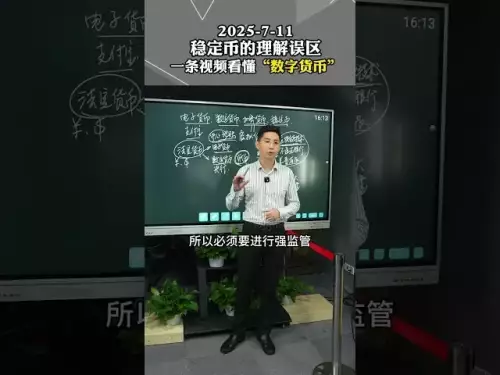-
 Bitcoin
Bitcoin $111200
0.38% -
 Ethereum
Ethereum $4311
0.07% -
 XRP
XRP $2.835
0.66% -
 Tether USDt
Tether USDt $1.000
0.01% -
 BNB
BNB $871.8
1.48% -
 Solana
Solana $203.7
0.33% -
 USDC
USDC $0.9998
0.00% -
 Dogecoin
Dogecoin $0.2181
1.15% -
 TRON
TRON $0.3277
-1.27% -
 Cardano
Cardano $0.8297
0.63% -
 Hyperliquid
Hyperliquid $47.23
0.97% -
 Chainlink
Chainlink $22.44
1.16% -
 Ethena USDe
Ethena USDe $1.001
0.03% -
 Sui
Sui $3.396
0.65% -
 Bitcoin Cash
Bitcoin Cash $602.4
-1.68% -
 Stellar
Stellar $0.3591
0.65% -
 Avalanche
Avalanche $24.72
2.04% -
 Hedera
Hedera $0.2207
1.81% -
 Cronos
Cronos $0.2643
-2.47% -
 UNUS SED LEO
UNUS SED LEO $9.508
-0.51% -
 Litecoin
Litecoin $113.8
1.95% -
 Toncoin
Toncoin $3.090
0.52% -
 Shiba Inu
Shiba Inu $0.00001239
0.76% -
 Polkadot
Polkadot $3.865
1.24% -
 Uniswap
Uniswap $9.409
1.13% -
 World Liberty Financial
World Liberty Financial $0.2393
28.62% -
 Dai
Dai $0.0000
0.01% -
 Ethena
Ethena $0.7362
-1.69% -
 Monero
Monero $270.5
-0.07% -
 Aave
Aave $302.9
0.38%
How to spot a scam using a block explorer
Always verify token contract addresses on block explorers—fake tokens often mimic real ones but reside on unverified, malicious contracts.
Sep 07, 2025 at 03:00 am
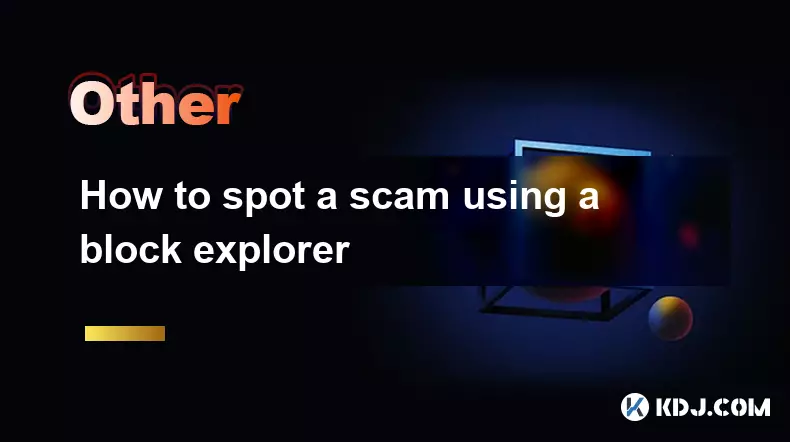
Understanding Blockchain Transparency
1. Blockchain technology operates on a decentralized ledger, making all transactions visible to anyone with access to a block explorer. This transparency allows users to verify the legitimacy of transactions and detect suspicious activity. By analyzing wallet addresses, transaction histories, and movement patterns, individuals can identify red flags associated with scams.
2. Scammers often use newly created wallets to receive funds before quickly transferring them through multiple addresses. Monitoring the creation date of a wallet and its transaction frequency can reveal unusual behavior. A legitimate project typically has a consistent transaction history, whereas scam wallets show sudden bursts of activity.
3. Using a block explorer like Etherscan or Blockchain.com enables users to trace the origin and destination of funds. If a wallet linked to an investment opportunity has no prior history or is connected to known fraudulent addresses, it should raise immediate concern.
4. Repeated transfers between a small group of addresses, also known as 'chain hopping,' are common in scam operations. This technique is used to obscure the trail of stolen funds. Observing circular transaction patterns can help users avoid engaging with malicious actors.
5. Always verify the contract address of tokens before investing. Fake tokens often mimic legitimate ones but are hosted on different contracts. A quick lookup on a block explorer can confirm whether a token is authentic or a clone designed to deceive.
Identifying Anomalies in Transaction Patterns
1. Large inflows of funds followed by rapid outflows are typical in scam schemes. Legitimate projects usually have steady transaction volumes, while fraudulent ones show spikes in activity shortly after launch. Checking the timing and size of transactions helps assess the credibility of a project.
2. Multiple small transactions from different sources converging into a single wallet may indicate a scam collecting funds from unsuspecting investors. This pattern is common in phishing campaigns or fake ICOs.
3. Some scams use smart contracts that automatically send tokens upon receiving funds, creating the illusion of legitimacy. However, these contracts often contain hidden functions that allow developers to drain funds. Reviewing contract code through a block explorer can uncover such malicious logic.
4. Transactions originating from exchange addresses and flowing into private wallets without clear purpose may signal money laundering or exit scams. Legitimate projects maintain transparent financial flows that align with their stated objectives.
5. Watch for wallets that receive funds but never interact with decentralized applications or provide utility. Dormant wallets that only collect assets are strong indicators of fraudulent activity.
Analyzing Wallet Behavior and Ownership
1. Publicly promoted wallets, especially those asking for direct transfers, should be scrutinized. Legitimate projects rarely request direct payments to personal wallets. Any such request warrants a detailed investigation using a block explorer.
2. Cross-referencing wallet addresses with community reports and blacklist databases enhances detection accuracy. Many block explorers integrate threat intelligence tools that flag high-risk addresses based on historical data.
3. Scammers often reuse wallet addresses across multiple fraudulent campaigns. If a wallet has been previously associated with a scam, any new interaction with it should be treated as highly suspicious.
4. Checking token holdings within a wallet can reveal inconsistencies. For example, a wallet claiming to support a project but holding no tokens from that project is likely fake. Genuine contributors usually hold and actively use project-related assets.
5. Use the 'Internal Transactions' tab on block explorers to detect hidden movements. Some scams exploit internal calls within smart contracts to siphon funds without visible external transfers.
Frequently Asked Questions
How can I check if a token contract is verified on a block explorer?Look for a blue checkmark or 'Verified Contract' label on platforms like Etherscan. Click on the contract address and navigate to the 'Contract' tab to view the source code. Unverified contracts lack transparency and pose higher risks.
What does it mean when a wallet has a high number of 'Token Approvals'?Excessive token approvals allow third-party contracts to access your funds. Scammers exploit this by tricking users into approving malicious contracts. Always revoke unnecessary approvals using tools provided by block explorers.
Can I track stolen funds using a block explorer?Yes, you can monitor the movement of stolen funds by entering the transaction hash or wallet address. While recovery is not guaranteed, tracking helps report incidents to authorities and warn others about active scam addresses.
Why do some transactions show 'Pending' for a long time?Transactions remain pending when the network fee is too low or the blockchain is congested. Scammers may create fake pending transactions to pressure victims into resending funds. Verify the actual status using the transaction ID.
Disclaimer:info@kdj.com
The information provided is not trading advice. kdj.com does not assume any responsibility for any investments made based on the information provided in this article. Cryptocurrencies are highly volatile and it is highly recommended that you invest with caution after thorough research!
If you believe that the content used on this website infringes your copyright, please contact us immediately (info@kdj.com) and we will delete it promptly.
- Litecoin, Ethereum, and Growth Prediction: What's Next for Crypto?
- 2025-09-07 16:25:13
- Ozak AI Presale: Riding the AI Wave for Potential 100x Returns
- 2025-09-07 16:45:13
- Spin to Win: Your Guide to Coin Master Free Spins and Links (September 2025)
- 2025-09-07 16:45:13
- Remittix: The Best Crypto Under $1 to Watch Now, Ya Heard?
- 2025-09-07 16:50:12
- Paxos, Hyperliquid, and USDH: Stablecoin Buybacks and Institutional Adoption
- 2025-09-07 16:55:13
- Meme Coins, Whales, and the Long Game: What's the Deal?
- 2025-09-07 15:25:16
Related knowledge
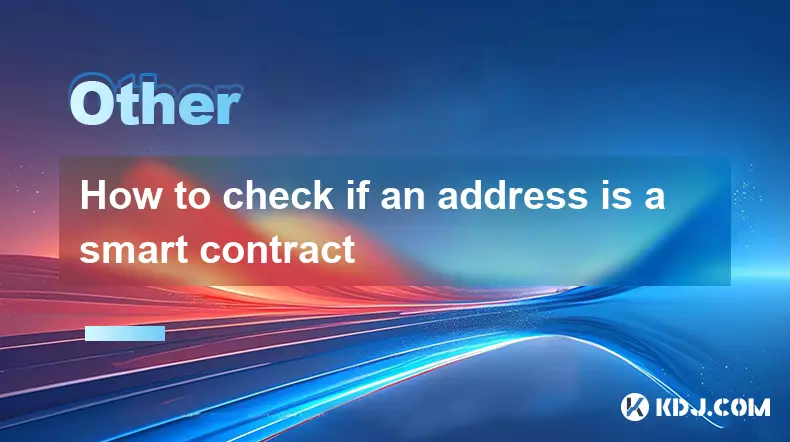
How to check if an address is a smart contract
Sep 07,2025 at 08:54am
Understanding Smart Contracts and Wallet Addresses1. Blockchain networks like Ethereum differentiate between externally owned accounts (EOAs) and cont...
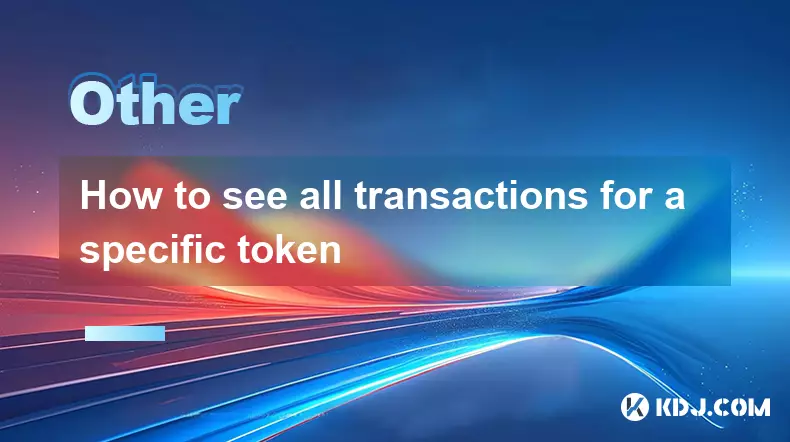
How to see all transactions for a specific token
Sep 05,2025 at 08:36am
Understanding Token Transactions on the Blockchain1. Every token transaction on a blockchain is recorded as part of a public ledger, making it accessi...

How to find the block height of a transaction
Sep 04,2025 at 08:37pm
Understanding Block Height in Blockchain Transactions1. Block height refers to the number of blocks that have been confirmed on the blockchain since i...
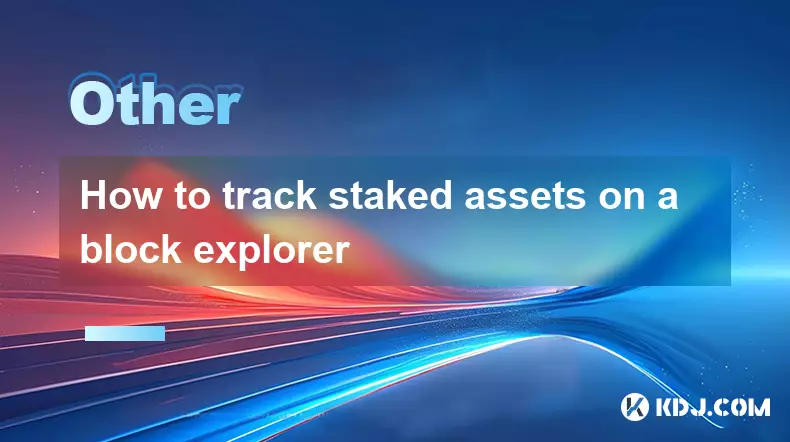
How to track staked assets on a block explorer
Sep 05,2025 at 04:18am
Understanding Staked Assets on the Blockchain1. Staked assets refer to cryptocurrency tokens locked in a smart contract or validator node to support n...
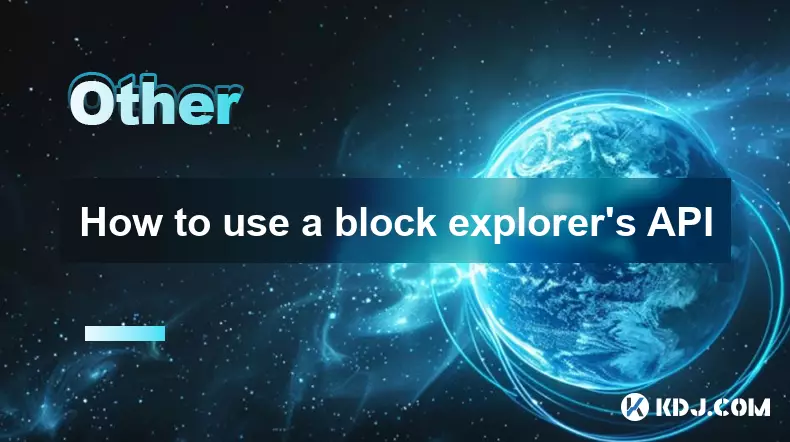
How to use a block explorer's API
Sep 07,2025 at 01:19am
Understanding the Basics of Block Explorer APIs1. A block explorer API allows developers to access blockchain data programmatically. This includes tra...
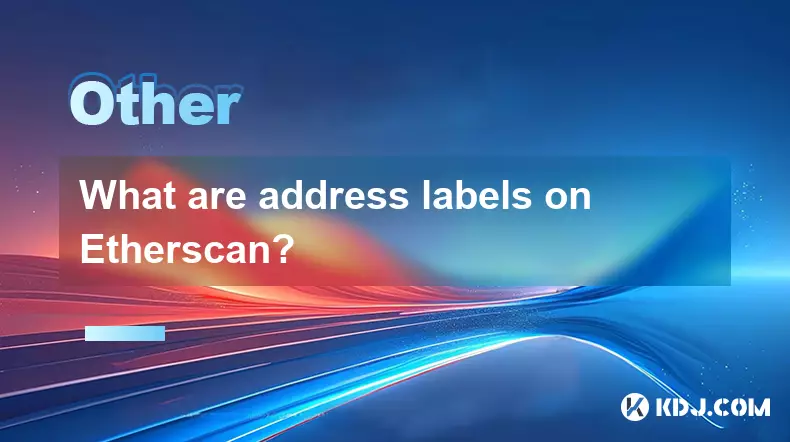
What are address labels on Etherscan?
Sep 07,2025 at 02:37pm
Understanding Address Labels on Etherscan1. Address labels on Etherscan are user-assigned or system-generated names attached to Ethereum addresses to ...

How to check if an address is a smart contract
Sep 07,2025 at 08:54am
Understanding Smart Contracts and Wallet Addresses1. Blockchain networks like Ethereum differentiate between externally owned accounts (EOAs) and cont...

How to see all transactions for a specific token
Sep 05,2025 at 08:36am
Understanding Token Transactions on the Blockchain1. Every token transaction on a blockchain is recorded as part of a public ledger, making it accessi...

How to find the block height of a transaction
Sep 04,2025 at 08:37pm
Understanding Block Height in Blockchain Transactions1. Block height refers to the number of blocks that have been confirmed on the blockchain since i...

How to track staked assets on a block explorer
Sep 05,2025 at 04:18am
Understanding Staked Assets on the Blockchain1. Staked assets refer to cryptocurrency tokens locked in a smart contract or validator node to support n...

How to use a block explorer's API
Sep 07,2025 at 01:19am
Understanding the Basics of Block Explorer APIs1. A block explorer API allows developers to access blockchain data programmatically. This includes tra...

What are address labels on Etherscan?
Sep 07,2025 at 02:37pm
Understanding Address Labels on Etherscan1. Address labels on Etherscan are user-assigned or system-generated names attached to Ethereum addresses to ...
See all articles





















![Daily Level for 9/7/2025: Momentum by EnenzoGD (WITH COIN) [GD Daily Video #809] Daily Level for 9/7/2025: Momentum by EnenzoGD (WITH COIN) [GD Daily Video #809]](/uploads/2025/09/07/cryptocurrencies-news/videos/daily-level-momentum-enenzogd-coin-gd-daily-video/68bcd9494f8d8_image_120_90.webp)


